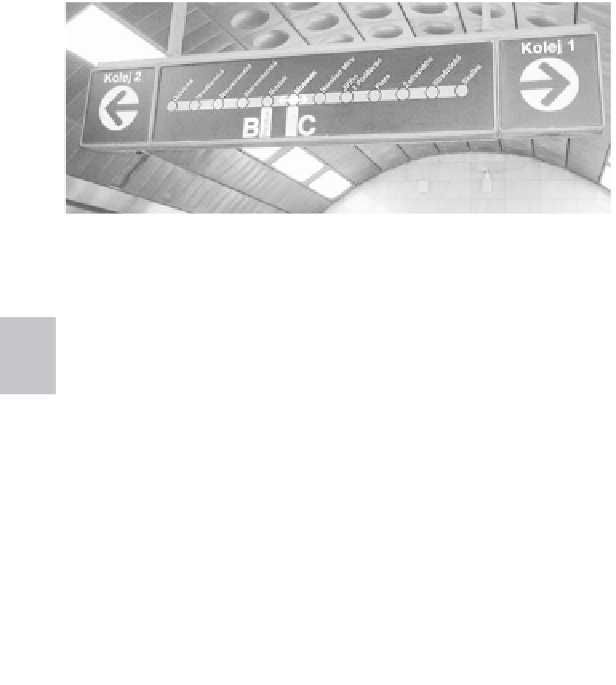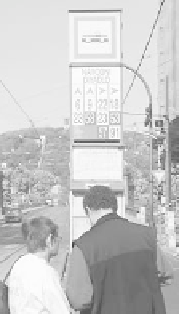Travel Reference
In-Depth Information
the daytime (a schedule is posted at each stop). The Metro closes
at midnight, and the nighttime tram routes (identified with
white numbers on blue backgrounds at tram stops) run all night
at 30-minute intervals. There's more information and a complete
route planner at www.dpp.cz/en.
H a nd y Tr a m :
Tram #22 is practically made for sightseeing,
connecting the New Town with the Castle
Qua r ter (see my “Self-Guided Tram
Tour,” later in this chapter, and find the
line marked on the color map at begin-
ning of this topic). The tram uses some
of the same stops as the Metro (making
it easy to get to—or travel on from—the
tram route). Of the many stops this tram
makes, the most convenient are two in the
New Town (Národní Třída Metro stop,
between the bottom of Wenceslas Square
and the river; and Národní Divadlo, at the
National Theatre), two stops in the Little
Qua r ter (Ma lostranské Náměstí and
Malostranská Metro stop), and three stops above Prague Castle
(Královský Letohrádek, Pražský Hrad, and Pohořelec; for details,
see “Getting to Prague Castle—By Tram” on page 97).
By Taxi
Prague's taxis—notorious for hyperactive meters—are being
tamed. New legislation is in place to curb crooked cabbies, and
police will always take your side in an argument. Many cabbies
are crooks who consider it a good day's work to take one sucker
for a ride. You'll make things difficult for a dishonest cabbie by
challenging an unfair fare.
While most hotel receptionists and guidebooks advise that
you avoid taxis, I find Prague to be a great taxi town and use them
routinely. With the local rate, they're cheap (read the rates on the
door: drop charge starts at 36 Kč; per-kilometer charge—29 Kč;
and waiting time per minute—5 Kč). The key is to be sure the cab-
bie turns on the meter at the #1 tariff (look for the word
sazba,




















